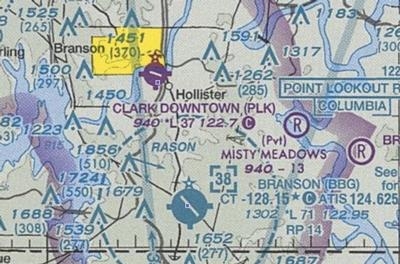Tue, Jan 21, 2014
Captain Of The Flight Was Making First Approach Into Branson
As part of its ongoing investigation into an incident involving a Southwest Airlines Boeing 737-700 that landed at the wrong airport on January 12 in Missouri, the NTSB has released a brief investigative update.

On Tuesday, January 14, the flight data recorder and cockpit voice recorder from the Southwest aircraft arrived in the NTSB laboratory and were prepared for readout and analysis. The FDR recorded approximately 1000 parameters and contained approximately 27 hours of recorded data. Investigators have begun to analyze the data.
In addition, the CVR contained two-hours of good quality recording. According to the CVR, the Southwest crew was informed by air traffic control that they were 15 miles from their intended target, which was Branson Airport. The crew responded that they had the airfield in sight and ATC cleared the aircraft for a visual approach and landing on runway 14 at Branson Airport. According to the CVR, the landing was uneventful and it was not until shortly after landing that the crew realized they had landed at the wrong airport.
On Thursday, January 16, the two pilots and a Southwest dispatcher who was riding in the jump seat were interviewed by NTSB investigators. The captain has been with Southwest since 1999 and has about 16,000 flight hours including about 6,700 hours as a captain on the B-737. The captain informed investigators that this was his first flight into Branson Airport. The first officer has been with Southwest since 2001 and has about 25,000 flight hours. The first officer informed investigators that he had previously flown into Branson Airport one time, but during daylight hours.
During the interviews, the pilots told investigators that the approach had been programmed into their flight management system, but that they first saw the airport beacon and the runway lights of M. Graham Clark Downtown Airport, located in Hollister, MO, which they mistakenly identified as Branson Airport. They cited the bright runway lights at M. Graham Clark Downtown Airport and the fact that the runway was oriented in a similar direction. They also informed investigators that they flew a visual approach into what they believed to be Branson Airport and that they did not realize they were at the wrong airport until they had landed. They confirmed that they utilized heavy braking to bring the aircraft to a stop and then advised the Branson Airport tower that they had landed at the wrong airport.
The investigation is ongoing. Any future updates will be issued as events warrant.
More News
From 2023 (YouTube Edition): "Ain’t Your Daddy’s Super Cub”—Don Wade Co-owned by Don and Ron Wade—the former of Don’s Dream Machines, a storied >[...]
Pilot-Rated Passenger Reported That The Pilot Did Not Adequately “Round Out” The Landing Flare And The Airplane Bounced And Yawed To The Right Analysis: The pilot state>[...]
Dead Reckoning Dead reckoning, as applied to flying, is the navigation of an airplane solely by means of computations based on airspeed, course, heading, wind direction, and speed,>[...]
Aero Linx: Lake Amphibian Club This website is created and sponsored by the Lake Amphibian Club, to help spread the word about these wonderful, versatile amphibians that can land j>[...]
“I am deeply honored to be sworn in as NASA administrator. NASA’s mission is as imperative and urgent as ever — to push the boundaries of human exploration, ignit>[...]
 Classic Aero-TV: In Praise of Alabamas Patriot Aircraft USA
Classic Aero-TV: In Praise of Alabamas Patriot Aircraft USA NTSB Final Report: Cirrus Design Corp SR22
NTSB Final Report: Cirrus Design Corp SR22 ANN's Daily Aero-Term (12.21.25): Dead Reckoning
ANN's Daily Aero-Term (12.21.25): Dead Reckoning ANN's Daily Aero-Linx (12.21.25)
ANN's Daily Aero-Linx (12.21.25) Aero-News: Quote of the Day (12.21.25)
Aero-News: Quote of the Day (12.21.25)



